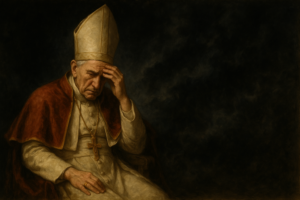Chaos by Tom O’Neil is a riveting exploration into one of the most infamous and perplexing criminal cases of the 20th century—the Manson Family murders. But beyond the gruesome details and sensational headlines, O’Neil delves into a labyrinthine conspiracy that suggests a far more sinister backdrop involving government mind control programs, covert operations, and the dark underbelly of the American political landscape.
A Deeper Look at the Manson Murders
O’Neil begins his journey with the intention of writing a magazine article commemorating the 20th anniversary of the Tate-LaBianca murders. However, what starts as a straightforward assignment quickly unravels into a decades-long investigation that challenges the official narrative set forth by prosecutor Vincent Bugliosi in Helter Skelter. O’Neil’s meticulous research exposes inconsistencies, overlooked evidence, and dubious connections that hint at a larger, more complex picture.
Government Mind Control and the CIA’s MK-Ultra Program
Central to O’Neil’s thesis is the controversial MK-Ultra program—a secret CIA project aimed at developing mind control techniques through the use of drugs, hypnosis, and psychological manipulation. O’Neil posits that Charles Manson, far from being a mere cult leader, may have been a pawn in these experiments. He uncovers evidence suggesting Manson had connections to individuals linked to the CIA and that his ability to control his followers might have been enhanced by techniques developed under MK-Ultra.
For those skeptical of government transparency and integrity, O’Neil’s findings are both alarming and plausible. He details how the CIA conducted numerous unethical experiments on unwitting subjects, often with devastating consequences. The implication that such a program could be connected to the Manson Family’s gruesome crimes adds a chilling dimension to an already horrifying story.
The Role of LAPD and FBI
O’Neil also scrutinizes the roles of the Los Angeles Police Department (LAPD) and the Federal Bureau of Investigation (FBI) in the Manson case. He suggests that both agencies may have been complicit in covering up crucial information, either to protect their own interests or to maintain the integrity of covert operations. This raises unsettling questions about the extent to which law enforcement can be trusted, particularly when their actions intersect with national security concerns.
Cultural and Social Implications
Chaos is not just a true crime narrative; it is a profound commentary on the social and cultural upheavals of the 1960s. O’Neil draws connections between the Manson murders and the broader context of the counterculture movement, the Vietnam War, and the pervasive fear of communism. He suggests that Manson’s actions, and the subsequent media frenzy, served to discredit and destabilize the burgeoning hippie movement, effectively quashing a significant force for social change.
Conclusion
For readers who are well-educated, intelligent, and suspicious of government narratives, Chaos offers a compelling and disturbing look into the potential depths of governmental manipulation and cover-ups. Tom O’Neil’s relentless pursuit of the truth, despite facing numerous obstacles and threats, is a testament to the importance of investigative journalism in holding power to account. The book raises critical questions about the nature of control, the ethics of governmental operations, and the thin veneer of the official stories we are often fed.
In essence, Chaos is a must-read for anyone interested in the darker intersections of crime, politics, and covert operations. It challenges readers to reconsider what they think they know about one of America’s most notorious criminal cases and to remain vigilant in questioning the actions and motivations of those in power.



